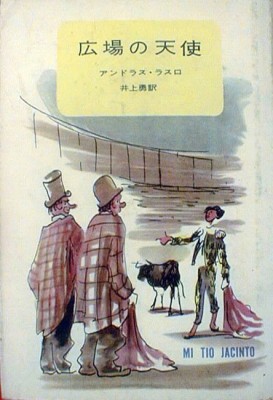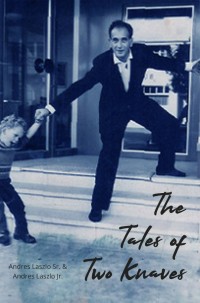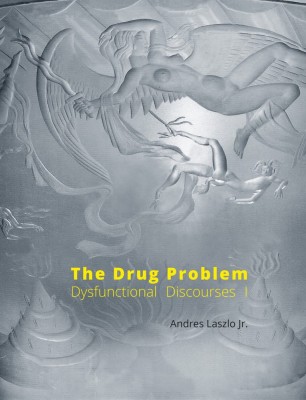FIND OUT WHAT CAUSES “YOUR” DRUG PROBLEM
(“My Drug Problem”)
Looking through the harms listed below, ask yourself: “If drugs had been legal (in your way, had you been forced to legalize them), how would that have affected this particular harm?” If your answer is “this harm would have gotten worse,” then illegality, as long as it is also cost-effective, is good because, according to you, it reduces the problem. If instead, you answer “it would have decreased” or “gone away,” then illegality is bad; a fortiori, so if there is a cost of keeping drugs illegal that would have gone away/gotten reduced with legalization.
The cost factor needs to be taken into account because illegality is an expensive policy. By deciding that something should be illegal, one takes upon ‘oneself’ to monitor the activity by a very costly instrument: the criminal justice system. If one chooses legality instead, supervision becomes much less expensive, and income will also be generated. This is something that you must (at least logic suggests that you ought to) consider in addition to everything else. You can choose to add the cost factor either for each harm or afterward for your final “cause-allocation number.” This is an important “on-top-of-everything-else-aspect” – an aspect that some would argue all by itself is enough to counter any pro-illegality argument – so please give it your attention.
If you want to do this exercise, the minimum requirement is that for every harm you mark what you figure is the leading cause; maybe U for “use” and I for “illegality,” remembering to add up “supply illegality” and “demand illegality” before deciding, and taking the cost-versus-revenue aspect into account. Then, as you finish, you sum up your Is and Us, and if there are more Is, you ought to be pro-legalization, otherwise pro-legality.
However, this would be a rough way of addressing the issue. Different harms have different weights, and if you opt to do the exercise as described above, you will have given equal importance to, for instance, “Health Care Costs” as to “Restriction on Medicinal Use of Drugs.” If you want to get the most out of this exercise, you must be a little more precise, and if so, I recommend that you follow the instructions below.
***
- ∂% (change in harm) For each harm, youmust answer: “In what direction and how much would the ‘strength’ of this particular harm change if drugs got legalized (again, legalized in the way that youwould have chosen to legalize them, assuming you had to)?” If you answer that the harmfulness (the strength) of the harm would decrease (-), then your estimate of how much it would reduce (%) must be between 0.01 (1%) and 1 (100%). If you answer that the harmfulness/strength of the harm would increase (+), then your estimate of how much it would increase (%) can be between 0.01(1%) and 1(100%) or any, as 100(10,000%).
- H% (harm importance) Also, youmust remember that different harms in themselves carry different weights – they contribute differently to whatever it is that yousee as “the drug problem” – so simply adding up the percentages, to find out whether you ought to prefer legalization or not will not suffice. Instead, “weights” must be attached to each harm and multiplied by the % changes you figure would result from legalization, so you will have to make sure that the sum of all your H% is 1, i.e., 100%.
If you want to find out what you ought to think (if rational) about how legalization (the way you would have done it) would affect what you think of as “the drug problem,” you can do this either by 1) hand, 2) constructing your spreadsheet or 3) downloading the Excell spreadsheet on my homepage.
Independent of what way you choose, you should start by 1) removing and adding the harms you want to remove or add (or accept the spreadsheet as it is) and then 2) make sure that your ∑H% comes to 1, i.e. 100%, before you finally 3) decide on how the strengths of the individual harms would be affected by your legalization.
- MDP% (My Drug Problem)The spreadsheet will multiply your estimated + or – change for each harm (∂%) with the overall weight you have assigned each harm (H%) to find out how much (and in what direction) legalization in regards to each particular harm would change the harmfulness of your overall drug problem as a consequence of your legalization: “My Drug Problem” (MDP%). The summing up of all these values (∑MDP%) will now answer the question; “What ought I think about drug illegality if I want to be rational?”
Here is the first line of the matrix that you will have to fill out for each harm to find your rational opinion regarding whether your legalization would be a good idea or not. Having filled in this information, the spreadsheet will take care of the rest.
Column 1: Your every harm (so remove/add whatever you like).
Column 2: Your estimate of harm x’s %-change with legalization (∂%).
Column 3: Your estimate of harm x’s % of total harm (H%).
Using your writer’s estimates regarding the first harm below – that harm is health care costs – would give the following first row:
Fig. 1: How to enter (your) harms
In plain text, my first line reads:
I believe that if drugs got legalized the way I would legalize them, then healthcare costs would fall by 40% (- 0.40). I further think that health-care-costs makes up 5% (0.05) of what I think of as “the drug problem” This means that in regards to the particular harm of healthcare costs, drug legalization would cause a 2% (-0.40 x 0.05 = -0.02) reduction of my overall drug problem before taking ‘and it would cost less’ into account (which I prefer to add in the end, and in this case would be 0).
So, if you have found the “My Drug Problem” article on www.andreslaszlo.com, to find out whether you ought to figure that your legalization would be a good thing or not, all you have to do is to enter your estimates, let Excel do the multiplications and sum up the MPD∂%-column.
When you are finished, if the ∑MPD% number is positive, then you ought to be against legalization; if it is negative, then you ought to be pro-legalization; if the number is positive but not all that far from zero before you have taken into account the cost of keeping drugs illegal, then you ought to think that illegality is bad unless you do not care about the cost issue.
If choosing to do this exercise, there are a few other things you ought to keep in mind:
Drugs are illegal, and if they became legal, then other and quite different harms and benefits could come into play. As these are not always discussed here, or even acknowledged, you will have to find and assess them in your matrix, and either disregard them or declare them negligible. For instance, as legalization would make drug use a much more rewarding activity there could well be a migration away from the main killer drugs (tobacco and alcohol) to the non-killing drug cannabis; if alcohol and tobacco deaths fell (say by 1%) because of such an effect, then people dying from other narcotic drugs (than cannabis) would have to grow a whole lot in order not to make legalization a good thing from a life-cost point of view.
It could be argued that the key question is not whether use or illegality causes the most harm, because reality is so complex that we cannot hope to fathom it by any matrix. If so, what is called for is a holistic answer, and the exercise suggested here could not possibly hope to come up with anything better than an analytic one.
Let me repeat; this is not simply about whether illegality or use per se is the cause of harm because many times legalization is found to be a bad thing, “yet it would cost less” should be added to its consequences, and when legalization is found to be a good thing “and also it costs less” should be added. Thus, unless you have considered this economic aspect for each harm, you must compensate by adjusting your ∑MPD%.
Allocating percentages to some harms will force you to put a price on human life; welcome to the not-so-pleasant part of drug policy. You might want to try to do this by weighing life against life or life-years against life-years when possible, rather than, for instance, life against money. Also, you could choose to value different lives differently.
Whereas this exercise pits illegality against use, you might think the causes of your drug problem are different. If so, the suggested matrix may be of little or no value to you.
Finally, do not forget to add up supply illegality and demand illegality into one cause/illegality (I) before comparing it to use (U).
As to attempts at estimating total costs in money, here are some from America:
A 2008 study by Jeffrey A. Miron suggested that legalizing drugs would inject $76.8 billion into the US economy: 41 billion from law enforcement savings and 33 billion in increased tax revenue.
Drug Policy and the Public Good (2010) suggests that the total cost of drug abuse to American society is $160 billion/y: health care $14.9 billion, workplace productivity losses $110.5 billion, and crime-related losses $35 billion.
A 2018 1-man study by “Buddy T,” “The Cost of Drug Use to Society,” suggests that the total US cost of all drug abuse is about $900 billion/y: tobacco 300, alcohol 249, illegal drugs 193, and legal drugs 78.5.
*
Before examining the different harms, a warning: Einstein might have been right both when arguing that nationalism is the measles of the human race and in predicting that the unleashing of the power of the atom is dragging us towards unparalleled catastrophe. However, as a contender, “the drug problem” has no or little reason to feel second to either, and maybe it somehow influenced Einstein when he wrote: Modern man’s tragedy is that she has made for herself life conditions that she is not yet capable of handling.
Now, especially as we have left out virtually all benefits of drug use, do not expect to be uplifted by the rest of this chapter. What lies ahead of you is little more than a tragic A to Z of human misery, and though your writer has done his best to “jazz it up,” such a description does not make for pleasant reading.
Yet, if you can keep your head and remember enough of these harms so that the next time you find somebody atop a soapbox losing theirs – proclaiming “Illegality or legality is good or bad because of X!” – you can recall that there is more to “the drug problem” than simply this X. Then, suppose you opt to play the devil’s advocate and remind the enthusiastic orator of this. In that case, you will have contributed to pushing the drug policy discourse away from its present all-to-often realm of “uninformed,” “ax-grinding,” “emotional,” etc. and towards that of “scientific,” “impartial,” “rational,” etc. and you will indeed have done something pretty close to a good deed.
Before reading the harms list, take a look at the spreadsheet (Appendix III) that you will later be asked to fill in.
Download the "My Drug Problem" test.









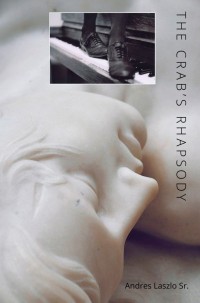

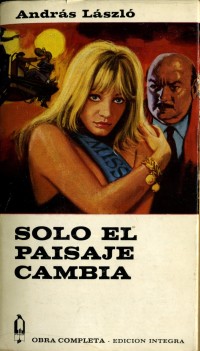











 My research has long centered on drug policy, a subject on which I have a liberal view; not because I like drugs, but because I think illegalization causes a lot more bad stuff than a more liberal approach would. Also, have some rather strong views on my fellow Swedes’ lack of interest in their cultural heritage in general, and about their neglect of their art glass/Orrefors in particular. The talks outlined below - whether in the shape of seminars, lectures or something more informal - I am ready to give in English, Swedish or Spanish.
My research has long centered on drug policy, a subject on which I have a liberal view; not because I like drugs, but because I think illegalization causes a lot more bad stuff than a more liberal approach would. Also, have some rather strong views on my fellow Swedes’ lack of interest in their cultural heritage in general, and about their neglect of their art glass/Orrefors in particular. The talks outlined below - whether in the shape of seminars, lectures or something more informal - I am ready to give in English, Swedish or Spanish. 














